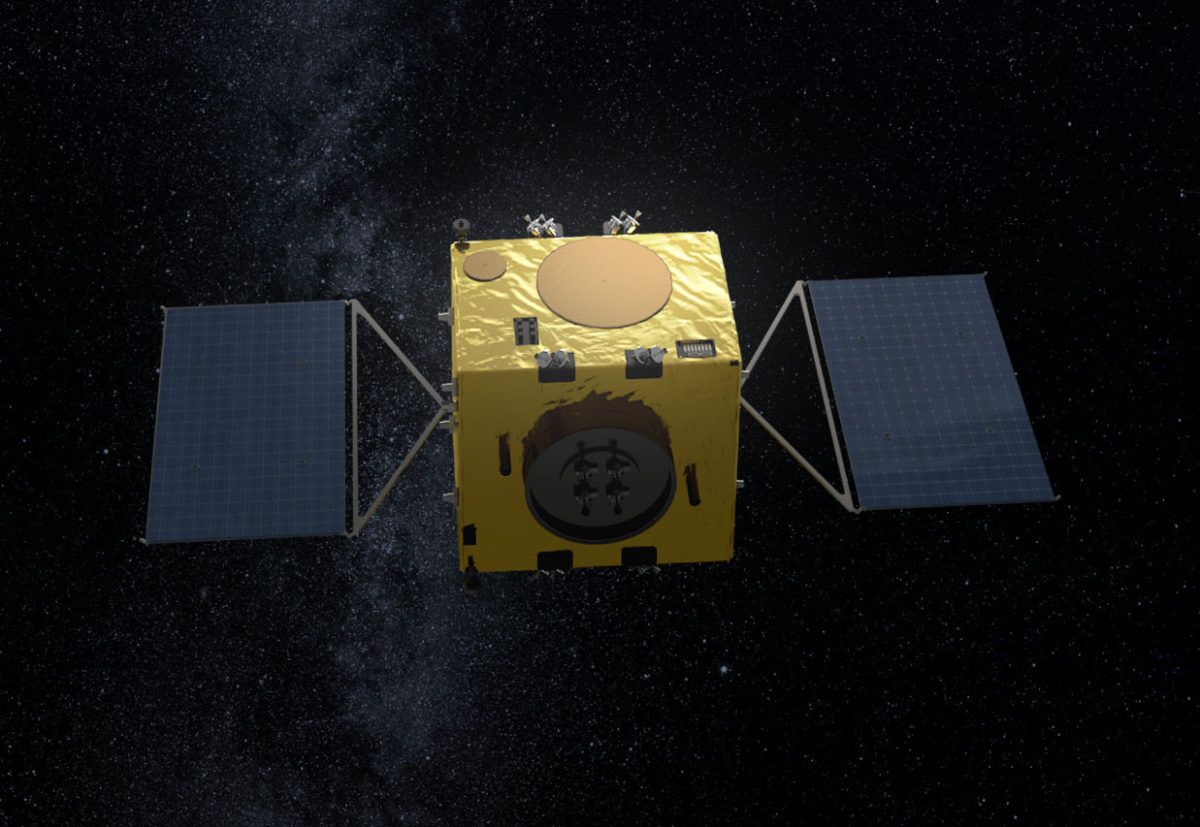Hera, ESA’s asteroid investigator
Highlights
- Hera will study the aftermath of NASA’s DART mission, which crashed a spacecraft into an asteroid’s moon on purpose.
- The results from Hera could help scientists defend Earth from asteroid impacts in the future.
- The European Space Agency is leading Hera, which is scheduled to arrive at asteroid Dimorphos in late 2026.
In September 2022, NASA’s Double Asteroid Redirection Test (DART) mission intentionally crashed into the moon of a near-Earth asteroid and successfully changed its orbit. Years later, the European Space Agency (ESA) is sending a follow-up spacecraft, Hera, to investigate DART’s literal and figurative impact.
Why is Hera going to an asteroid?
In 2018, two space agencies made an agreement: if NASA sent a mission to crash into a nearby asteroid, the European Space Agency (ESA) would send a spacecraft a few years later to investigate the aftermath. This plan, called the Asteroid Impact and Deflection Assessment (AIDA), would test humanity’s ability to deflect asteroids and help scientists develop the technology to turn away a future asteroid on a collision course with Earth.
NASA fulfilled its part in 2022, when the DART spacecraft traveled to a binary asteroid system composed of the asteroid Didymos and its moonlet, Dimorphos. DART crashed into Dimorphos and successfully altered its orbit by over 30 minutes. Though scientists had thought about the possibility of asteroid deflection through impacts for years, this was the first time the idea had ever been tested.
The DART impact was a success, but there is still much we don’t know about how exactly Dimorphos reacted to the collision. By sending a follow-up spacecraft to take detailed observations, the ESA’s Hera mission will help scientists understand how DART reshaped Dirmorphos’ surface and altered its orbit. Visiting the asteroid Dimorphos post-impact will also allow Hera to study its subsurface and provide a window into what asteroids are like throughout the Universe.

What will the Hera mission do?
Hera will travel to the near-Earth asteroid system of Didymos and Dimorphos, which are about 780 meters (2,560 feet) and 160 meters (525 feet) in diameter, respectively. Once there, the space mission will orbit for months, measuring the impact crater left behind by the DART impactor and mapping the surface of Dimorphos. About six weeks after arriving at the target asteroids, Hera will deploy two CubeSats called Milani and Juventas. These CubeSats will help Hera measure the chemical makeup of Dimorphos’ surface and probe its subsurface.
Should we be afraid of Dimorphos ping-ponging into Earth now that DART has smashed it?
No. In fact, DART and Hera will help scientists understand how to protect Earth from potentially harmful asteroids. Although Didymos and Dimorphos pose no threat to Earth, they pass relatively close to our planet, making them the perfect target for a planetary defense mission.
When did the Hera mission launch?
Hera launched on Oct. 7, 2024, and is expected to reach its destination in 2026.
Who is in charge of Hera?
The Hera mission is being developed as part of the European Space Agency’s (ESA’s) Space Safety program. The principal investigator for the space mission is Patrick Michel, director of research at the French Scientific Research National Center and leader of a team at the Lagrange laboratory at the Côte d’Azur Observatory. The mission’s project manager is Ian Carnelli, of the European Space Research and Technology Centre (ESTEC) in The Netherlands, and the mission’s project scientist is Michael Kueppers, of the European Space Astronomy Centre in Spain.
Support missions like Hera
Whether it's advocating, teaching, inspiring, or learning, you can do something for space, right now. Let's get to work.


 Explore Worlds
Explore Worlds Find Life
Find Life Defend Earth
Defend Earth


